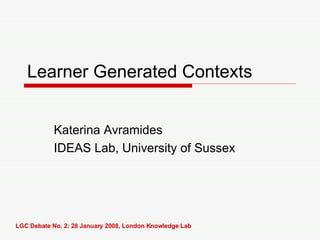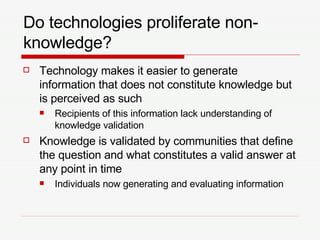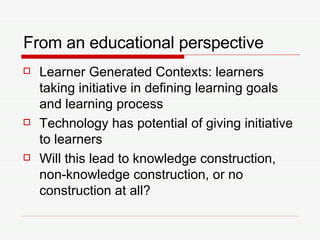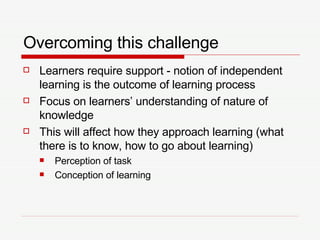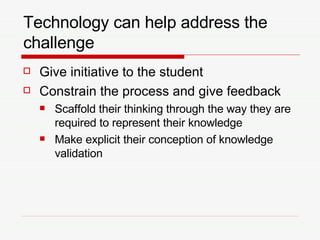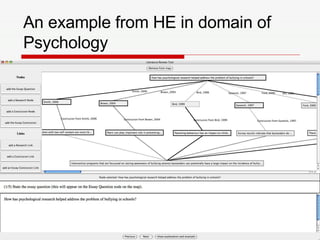Epistemic Cognition
- 1. Learner Generated Contexts Katerina Avramides IDEAS Lab, University of Sussex LGC Debate No. 2: 28 January 2008, London Knowledge Lab
- 2. Do technologies proliferate non-knowledge? Technology makes it easier to generate information that does not constitute knowledge but is perceived as such Recipients of this information lack understanding of knowledge validation Knowledge is validated by communities that define the question and what constitutes a valid answer at any point in time Individuals now generating and evaluating information
- 3. From an educational perspective Learner Generated Contexts: learners taking initiative in defining learning goals and learning process Technology has potential of giving initiative to learners Will this lead to knowledge construction, non-knowledge construction, or no construction at all?
- 4. Challenge of âLearner Generatedâ Learners are not young scientists Already a body of knowledge out there Learners need to construct knowledge while at the same time learning how to construct Learning what questions are asked as well as how to formulate an adequate answer
- 5. Overcoming this challenge Learners require support - notion of independent learning is the outcome of learning process Focus on learnersâ understanding of nature of knowledge This will affect how they approach learning (what there is to know, how to go about learning) Perception of task Conception of learning
- 6. Technology can help address the challenge Give initiative to the student Constrain the process and give feedback Scaffold their thinking through the way they are required to represent their knowledge Make explicit their conception of knowledge validation
- 7. An example from HE in domain of Psychology

